Shevlin Sebastian's Blog, page 7
August 25, 2024
A ‘Malayali’ beer becomes popular in Poland



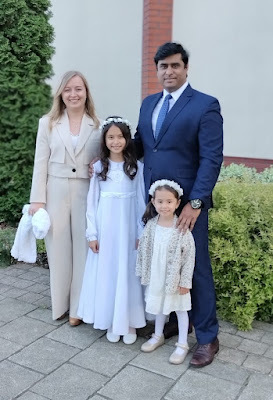

 Photos: Sargheve Sukumaran (left) with Chandramohan Nallur; Chandramohan with his wife Anna and with his family; happy clients A Warsaw-based Malayali Chandramohan Nallur has made a beer that has hit the jackpot. He will enter the Indian market next year. Chandramohan also talks about his love story By Shevlin Sebastian Chandramohan Nallur is director, business relations, at the Indo-Polish Chamber of Commerce and Industries at Warsaw, Poland. He sourced clients for Indian businesses. One client was a Nigerian business owner, Yusuf Jimoh, who ordered five tonnes of rice flakes. Following a message from Chandramohan, the Warsaw-based entrepreneur Shantanu Roy imported the rice flakes from Varanasi. Price: Rs. 8.5 lakh. This was four days before Russia invaded Ukraine on February 24, 2022. Because of the volatile movement of the exchange rate, Jimoh wanted to back out of the deal. Chandramohan allowed Jimoh to do so because he felt he could find another customer. But when he did not do so, Chandramohan came up with an idea. He would buy the rice flakes himself. Chandramohan went on the net to find out what he could do with the rice flakes. That was when he stumbled on the idea of making beer. Chandramohan asked his designer friend Sargheve Sukumaran whether he wanted to join the venture. Sukumaran agreed. The duo went to different breweries in Warsaw. They made a beer and provided it to local customers. “There was no ‘Wow’ factor in the beer,” said Chandramohan. “And there were no repeat orders.” Some customers complained the beer was too bitter. Others said the beer was flat. The production of all beers involves either malt or wheat. In their fourth version, they used the usual method but with one difference. They added rice flakes along with a reduced amount of malt. “This reduced the bitterness and added a bit of sweetness,” said Chandramohan. “It became super light. It was an accidental discovery.” Chandramohan had been using Polish hops. According to Wikipedia, hops are the hanging flowers of the Humulus lupulus plant. They are the driving source of bitterness, aroma, and flavour in all beers. After doing research, Chandramohan discovered that the best hops come from Slovakia while the best malt comes from Bavaria in Germany. So, he imported both. When Chandramohan thought about what name to give the beer, he decided on the name Malayali. “It was a crazy idea,” he said. As for the label, the duo realised that Kingfisher beer has a kingfisher on the bottle. Bira 91 has a monkey on the bottle. Since the beer was going to be called Malayali, they took the help of a design firm in Kochi to find out what Malayalis relate to. One was Kathakali and the other was the Mollywood superstar Mohanlal. They launched the beer on November 13, 2022. Initially, they used the Mohanlal and Kathakali images on the bottles. “The design gave the impression it was a craft beer and not a mass market one,” said Chandramohan. “So we changed the design.” Two months ago, they began using the alphabet called ‘Ma’ (Mother) in Malayalam. “It is on the lines of a Heineken beer,” said Chandramohan. The initial word of mouth in the Indian restaurants in Warsaw — ‘Mr. India’, ‘Namaste India’, ‘India Gate’ and ‘Coco Lounge’ (Polish) — was that this was a different beer. Arun Barot, owner of the Mr. India restaurant said that ‘Malayali’ is super light and easy to drink. “It doesn’t make you feel heavy,” he said. “With other Indian brands, especially when you have it with our food, burping is an issue. But that is not the case with ‘Malayali’. One reason why the beer is so good is because Chandramohan uses the best ingredients. Hence, the beer is of a very high quality. All my customers like it.” Now ‘Malayali’ is outselling ‘Kingfisher’ three to one in Warsaw, said Chandramohan. “We are the only Indian beer which is also sold outside of Indian restaurants,” said Chandramohan. One cause was that the Europeans did not know what the word Malayali meant. “For them, it is like ordering Heineken or Carlsberg,” said Chandramohan. “We are a hybrid beer. We sell in Mexican and Italian bars, too.” In the Coco Lounge, Malayali beer outsells Polish brands like Zuber and Tyskie. Now Chandramohan has plans to enter the diaspora market in Britain, America and the United Arab Emirates. In 2023, Chandramohan sold around 36,000 bottles from July to December. Each bottle contains 500 ml and retails at 3.75 Euros (Rs 342). In the first quarter of 2024, he has already sold 157000 bottles. “Because of this type of growth, I am looking for investors from India,” said Chandramohan. “In 2025, I want to enter the Indian market.” Early LifeChandramohan grew up in Palakkad, Kerala. He earned his B. Com degree from the Government Arts and Science College in Meenchanda, Kozhikode in 2007. Then Chandramohan decided to study abroad. He wanted to do so in Scotland. A friend of his was studying at the Robert Gordon University in Aberdeen. He went to an agency which sends students abroad for higher studies. While waiting to meet the staff, he saw a poster on the wall. It advertised a two-year degree course at the ESERP Digital Business and Law School in Barcelona. The fees were 1500 euros less than what he would have to pay to study in Scotland for a course. When he asked about the details, the agency said they had just connected with the school and had not sent anybody yet. Chandramohan decided to go to Barcelona. “It was a random hunch,” he said. After he successfully completed the course in political science and marketing, Chandramohan got a job in O’Hara’s Irish bar and restaurant at Barcelona. He worked there for three years. Then he joined a company called LycaMobile, the world’s largest network operator. Chandramohan joined as a salesperson and began his climb up the corporate ladder. He travelled to Portugal, Germany, Italy, the USA and other countries. He ended up becoming the Director, Global Operations in 2012. In that year, he came to Warsaw to launch LycaMobile. Earlier, in Barcelona, Chandramohan met a Polish girl by the name of Anna Lachmaniuk. She was a student and had come to O’Hara’s with her CV, looking for a job. They went on dates after that. And love blossomed between the two. At Warsaw, Chandramohan continued to date Anna, a doctor for autistic and Down’s Syndrome children. Chandramohan took her to Kerala in 2010 so that his parents could meet Anna. They got married on August 17, 2013. The couple has two children, nine-year-old Maya, and four-year-old Julia. Asked about his connections to the Chamber, Chandramohan said that it happened through a nomination process. Because of his background, he got into business relations. The chamber wanted to concentrate on business in South India. “Many South Indian companies approach us because they want to do business in Europe,” he said. Chandramohan, on the other hand, wants to do business in India. Expect to see a lot of ‘Malayalis’ across the country in the near future. (An edited version was published in The Sunday Magazine, The New Indian Express, South India and Delhi)
Photos: Sargheve Sukumaran (left) with Chandramohan Nallur; Chandramohan with his wife Anna and with his family; happy clients A Warsaw-based Malayali Chandramohan Nallur has made a beer that has hit the jackpot. He will enter the Indian market next year. Chandramohan also talks about his love story By Shevlin Sebastian Chandramohan Nallur is director, business relations, at the Indo-Polish Chamber of Commerce and Industries at Warsaw, Poland. He sourced clients for Indian businesses. One client was a Nigerian business owner, Yusuf Jimoh, who ordered five tonnes of rice flakes. Following a message from Chandramohan, the Warsaw-based entrepreneur Shantanu Roy imported the rice flakes from Varanasi. Price: Rs. 8.5 lakh. This was four days before Russia invaded Ukraine on February 24, 2022. Because of the volatile movement of the exchange rate, Jimoh wanted to back out of the deal. Chandramohan allowed Jimoh to do so because he felt he could find another customer. But when he did not do so, Chandramohan came up with an idea. He would buy the rice flakes himself. Chandramohan went on the net to find out what he could do with the rice flakes. That was when he stumbled on the idea of making beer. Chandramohan asked his designer friend Sargheve Sukumaran whether he wanted to join the venture. Sukumaran agreed. The duo went to different breweries in Warsaw. They made a beer and provided it to local customers. “There was no ‘Wow’ factor in the beer,” said Chandramohan. “And there were no repeat orders.” Some customers complained the beer was too bitter. Others said the beer was flat. The production of all beers involves either malt or wheat. In their fourth version, they used the usual method but with one difference. They added rice flakes along with a reduced amount of malt. “This reduced the bitterness and added a bit of sweetness,” said Chandramohan. “It became super light. It was an accidental discovery.” Chandramohan had been using Polish hops. According to Wikipedia, hops are the hanging flowers of the Humulus lupulus plant. They are the driving source of bitterness, aroma, and flavour in all beers. After doing research, Chandramohan discovered that the best hops come from Slovakia while the best malt comes from Bavaria in Germany. So, he imported both. When Chandramohan thought about what name to give the beer, he decided on the name Malayali. “It was a crazy idea,” he said. As for the label, the duo realised that Kingfisher beer has a kingfisher on the bottle. Bira 91 has a monkey on the bottle. Since the beer was going to be called Malayali, they took the help of a design firm in Kochi to find out what Malayalis relate to. One was Kathakali and the other was the Mollywood superstar Mohanlal. They launched the beer on November 13, 2022. Initially, they used the Mohanlal and Kathakali images on the bottles. “The design gave the impression it was a craft beer and not a mass market one,” said Chandramohan. “So we changed the design.” Two months ago, they began using the alphabet called ‘Ma’ (Mother) in Malayalam. “It is on the lines of a Heineken beer,” said Chandramohan. The initial word of mouth in the Indian restaurants in Warsaw — ‘Mr. India’, ‘Namaste India’, ‘India Gate’ and ‘Coco Lounge’ (Polish) — was that this was a different beer. Arun Barot, owner of the Mr. India restaurant said that ‘Malayali’ is super light and easy to drink. “It doesn’t make you feel heavy,” he said. “With other Indian brands, especially when you have it with our food, burping is an issue. But that is not the case with ‘Malayali’. One reason why the beer is so good is because Chandramohan uses the best ingredients. Hence, the beer is of a very high quality. All my customers like it.” Now ‘Malayali’ is outselling ‘Kingfisher’ three to one in Warsaw, said Chandramohan. “We are the only Indian beer which is also sold outside of Indian restaurants,” said Chandramohan. One cause was that the Europeans did not know what the word Malayali meant. “For them, it is like ordering Heineken or Carlsberg,” said Chandramohan. “We are a hybrid beer. We sell in Mexican and Italian bars, too.” In the Coco Lounge, Malayali beer outsells Polish brands like Zuber and Tyskie. Now Chandramohan has plans to enter the diaspora market in Britain, America and the United Arab Emirates. In 2023, Chandramohan sold around 36,000 bottles from July to December. Each bottle contains 500 ml and retails at 3.75 Euros (Rs 342). In the first quarter of 2024, he has already sold 157000 bottles. “Because of this type of growth, I am looking for investors from India,” said Chandramohan. “In 2025, I want to enter the Indian market.” Early LifeChandramohan grew up in Palakkad, Kerala. He earned his B. Com degree from the Government Arts and Science College in Meenchanda, Kozhikode in 2007. Then Chandramohan decided to study abroad. He wanted to do so in Scotland. A friend of his was studying at the Robert Gordon University in Aberdeen. He went to an agency which sends students abroad for higher studies. While waiting to meet the staff, he saw a poster on the wall. It advertised a two-year degree course at the ESERP Digital Business and Law School in Barcelona. The fees were 1500 euros less than what he would have to pay to study in Scotland for a course. When he asked about the details, the agency said they had just connected with the school and had not sent anybody yet. Chandramohan decided to go to Barcelona. “It was a random hunch,” he said. After he successfully completed the course in political science and marketing, Chandramohan got a job in O’Hara’s Irish bar and restaurant at Barcelona. He worked there for three years. Then he joined a company called LycaMobile, the world’s largest network operator. Chandramohan joined as a salesperson and began his climb up the corporate ladder. He travelled to Portugal, Germany, Italy, the USA and other countries. He ended up becoming the Director, Global Operations in 2012. In that year, he came to Warsaw to launch LycaMobile. Earlier, in Barcelona, Chandramohan met a Polish girl by the name of Anna Lachmaniuk. She was a student and had come to O’Hara’s with her CV, looking for a job. They went on dates after that. And love blossomed between the two. At Warsaw, Chandramohan continued to date Anna, a doctor for autistic and Down’s Syndrome children. Chandramohan took her to Kerala in 2010 so that his parents could meet Anna. They got married on August 17, 2013. The couple has two children, nine-year-old Maya, and four-year-old Julia. Asked about his connections to the Chamber, Chandramohan said that it happened through a nomination process. Because of his background, he got into business relations. The chamber wanted to concentrate on business in South India. “Many South Indian companies approach us because they want to do business in Europe,” he said. Chandramohan, on the other hand, wants to do business in India. Expect to see a lot of ‘Malayalis’ across the country in the near future. (An edited version was published in The Sunday Magazine, The New Indian Express, South India and Delhi)
August 17, 2024
Snapshots of a genius
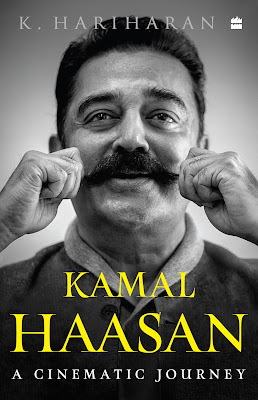
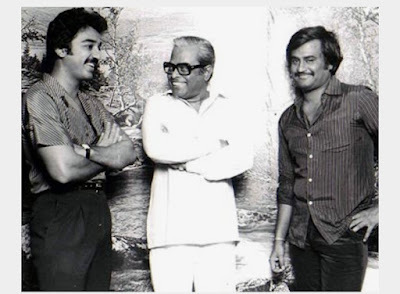
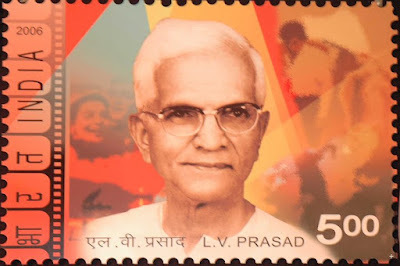
 Captions: The book cover; Director K. Balachander (centre) with Kamal Haasan (left) and Rajnikanth; Producer LV Prasad (1908-1994); Author K Hariharan
Captions: The book cover; Director K. Balachander (centre) with Kamal Haasan (left) and Rajnikanth; Producer LV Prasad (1908-1994); Author K Hariharan Author K. Hariharan gives an insightful look at the magnificent career of Tamil superstar Kamal Haasan By Shevlin Sebastian After almost 25 years of marriage to D. Srinivasan, Rajalakshmi became pregnant. She already had two sons and a daughter. The eldest boy was 23. Srinivasan, a Brahmin lawyer and freedom fighter, was worried. His wife was a diabetic. She was also overweight and had shortness of breath. When the time came, the family rushed Rajalakshmi to a local hospital. This was in the town of Paramakudi (506 kms from Chennai). The doctor looked at her and said that a normal delivery would not be possible. Even so, Rajalakshmi went into labour. After several hours, she gave birth to a chubby baby. The doctor told Rajalakshmi’s eight-year-old daughter Nalini to keep an eye on the baby. Then he rushed Rajalakshmi for an emergency post-delivery surgical procedure. It was in such dramatic circumstances that Kamal Haasan, the future film superstar, was born. The year was 1954. While he was a child, a helper tasked with looking after him would take him to an old thatched cinema talkie. Kamal watched many of MG Ramachandran and Sivaji Ganesan’s movies. When he returned home, he would quote all the dialogues and mimic the acting. Thus, his love for acting was born. Serendipity played a role for Kamal to get his first acting role. His mother took the six-year-old Kamal to consult with Dr Sarah Ramachandran. She immediately saw something in him. The doctor told Rajalakshmi that Kamal should do a screen test with another patient of hers. He was the renowned producer AV Meiyappan. When Meiyappan saw Kamal, he was impressed. He immediately cast Kamal as the main child artiste in his film, ‘Kalathur Kannamma’. Kamal said, “I truly consider myself fortunate that a stalwart like AV Meiyappan turned the spotlight on me.” The film became an enormous success. Kamal won the National Award For Best Child Actor. This was presented to him by President S Radhakrishnan. K. Hariharan recounts all this in vivid detail in his book, ‘Kamal Haasan — A Cinematic Journey’. The Chennai-based Hariharan is a national film award winner who has made nine feature films and over 350 short and documentary films. He is also a film academician. Hariharan traces Kamal’s film career from the beginning. He talks about his fruitful partnership with director K. Balachander. They did 26 films together. And it all began with ‘Arangetram’ (1973), in which the 17-year-old Kamal played a villain. In ‘Moondru Mudichu’ (‘Three Knots of a Wedding’-1976) Balachander used sound effects to replace the spoken word. So when Kamal and Sridevi met for the first time in a clock shop, they were interrupted by the incessant chiming of the clocks. The next time, they communicated by hitting clothes on a wet stone. Kamal said, “At another instance, I played a melody on the mouth organ for her. Rajini (Rajnikanth) watched this with the sound of a hand pump in the background. What a way to define characters!” Much later, Balachander said, “In our first few films, I can take the credit for propelling Kamal to become a genuine artist. But for the rest, I cruised on his success.”Right from the beginning of his career, Kamal received mass appreciation. So much so that he acted in 150 films between 1972 and 1987. By the time he acted in Bharathiraja’s debut film, ‘16 Vayathinile’ (1977), Kamal was the most prominent actor. So, he received Rs 27,000, while Rajnikanth got Rs 3000. The shooting took place in a remote village. The actors stayed in a small government guest house. While Kamal slept in the bedroom, Rajnikanth and Bharathiraja spent the night on the verandah. Such are the struggles from which film icons like Rajnikanth rose. For each film that Hariharan describes, he gives the socio-political, religious, and cultural background of that time. He also analyses the themes, plots, the camera angles and reasons behind why a scene was shot in a particular way. Many of Hariharan’s observations were insightful.Here’s one: Hariharan said that early Tamil cinema was engaged in a battle to counter the hegemony of Hindi cinema and its so-called nationalistic politics. ‘Until 1975, it was intrinsically bound with the vernacular Dravidian movement to unsettle the pseudo-nationalist vision of Nehruvian dynastic politics,’ he wrote. Entry into BollywoodKamal’s first foray into Bollywood was with ‘Ek Duuje Ke Liye’ (EDKL, 1981). The legendary LV Prasad produced it. Despite an initially lacklustre response by Mumbai film distributors, EDDL became an all-India hit. Little did Kamal know then that the Laxmikant-Pyarelal song, ‘Tere mere beech mein, kaisa ye bandhan anjana’, would become the romantic anthem for youngsters all over India for the next few years. Kamal also did not know that his success would open the doors in Bollywood for singers like KJ Yesudas, KS Chithra, and the legendary music composer AR Rahman. In reverse, Lata, Mangeshkar, Asha Bhosle and Udit Narayan sang Tamil and Telugu songs. When EKDL reached 50 weeks, Kamal flew to Mumbai for a celebratory function at Novelty Theatre.At the theatre, LV Prasad told Kamal, “The floor is spanking and clean, isn’t it?” “Yes, it is clean, but what is so special about that?” said Kamal. Prasad told Kamal that when he was 26 years old, the same age as Kamal in EDKL, he used to be an usher in the same theatre. “Between screenings, I had to mop this floor clean every day. I am happy such traditions are still being followed by the workers here,” said Prasad.It was a lesson in humility that Kamal never forgot. ‘Lost and Found’ One film which Hariharan focused on was the superhit, ‘Michael Madana Kamal Rajan’ (MMKR-1990). It was a comedy film made by the director Singeetam Srinivasa Rao. The film tells the story of a woman having quadruplets. They get kidnapped at birth and grow up in different places. Later, after many twists and turns, they reunite with their mother. Hariharan writes that this theme of ‘lost and found’ children in MMKR is a continuation of films made on this theme in the 1950s and 60s in many languages, including Hindi. He mentions Raj Kapoor’s ‘Awaara’ (1951) and ‘Amar Akbar Antony’ (1977). ‘On introspection, one realises they are all resonating with a part of Indian history which most filmmakers and other artists were unwilling to directly talk about: the great Indian Partition of 1947,’ writes Hariharan. ‘Millions died and thousands of families fled across the borders, leaving their loved ones behind and or losing them somewhere in their journeys. More impactful than the loss of lives was the loss of one’s identity.’ Some of the other films that Hariharan wrote about include ‘Raja Paarvai’, ‘Nayakan’, ‘Pushpak’, ‘Sathya’, ‘Gunaa’, ‘Thevar Magan’, ‘Indian’ and ‘Anbe Sivam’. The impact of stardom Being a superstar for decades, many fans are crazy about Kamal. In the book, Kamal said, “I was once going back in a car after finishing the day’s shooting. A big crowd had assembled to watch us at the location and suddenly one young boy ran alongside the car with a blade in his right hand, slitting his left wrist, and shouting out my name like a possessed person. I was shocked, even angry, at this insane act of fandom. I stopped the car and rebuked him never to do such an act again.” For the ardent Kamal fan, this is a not-to-be-missed book. For those who don’t know much about Kamal’s Tamil film oeuvre, this is a beautiful way to understand it. Since many of the films, especially the early ones, are available on YouTube, you can watch them. And then read the commentary of the film by Hariharan. This will deepen your understanding. Kamal has defied time, and the massive changes in cinema and society, and remained relevant. His career has lasted a mind-boggling 63 years. And the journey continues. ‘Kalki 2898 AD’ was released on June 27, while ‘Indian 2’ hit the screens on July 12. There is no doubt he is a genius. And, like Bharat Ratna Lata Mangeshkar, Kamal Haasan is also a national treasure.(Published in The Sunday Magazine, The Hindustan Times, New Delhi and other editions)
Book DetailsTitle: Kamal Haasan – A Cinematic Journey Author: K. Hariharan Publisher: HarperCollins PublishersPages: 259Price: Rs 699
August 4, 2024
An unforgettable moment for Ramachandra

 Photos: Ramachandra Pulavar; Moscow in winter
Photos: Ramachandra Pulavar; Moscow in winterBy Shevlin Sebastian
In November 1979, a six-member team of Tholpavakoothu artists travelled to Moscow.
They included Ramachandra Pulavar and his father, K.L. Krishnan Kutty. They were going to take part in the art festival at the Tashkent International Trade Fair. “This is the first time we were travelling abroad,” said Ramachandra.
Artists from 56 nations had arrived to perform at the fair.
After their performance, the team flew to Moscow (3393 kms away). From there, they were supposed to take a flight to Delhi.
The Indian delegation leader was G. Venu, a Koodiyattam master. He was the only one who could speak English. They arrived at the Sheremetyevo airport and discovered that two seats were wait-listed. The two who stayed behind were the youngsters, Ramachandra and Ramaswamy.
“It was freezing,” said Ramachandra. “We could see ice on the streets. At dawn, loaders had to sweep the ice away using a plough so that the roads could be usable. We had thin coats. We did not know Moscow would be so cold.”
In the end, a lady member of the festival organising committee took the pair to a posh hotel. “Since it was non-vegetarian food, we ate a lot of fruits,” said Ramachandra. They enjoyed their stay. November 7 was October Revolution Day. They could observe the ceremonies on the street.
Because of a lack of telephonic contact, the team in Delhi was unaware of the whereabouts of the two youths. Neither was any information passed from Moscow to Delhi.
Venu and Ramachandra’s father would come every day to the Palam Airport. They would wait to see the passengers of the flight from Moscow. Because of the tension about the fate of the youths, Venu’s hair turned white. In November 1979, a six-member team of Tholpavakoothu artists travelled to Moscow.
They included Ramachandra Pulavar and his father, K.L. Krishnan Kutty. They were going to take part in the art festival at the Tashkent International Trade Fair. “This is the first time we were travelling abroad,” said Ramachandra.
Artists from 56 nations had arrived to perform at the fair.
After their performance, the team flew to Moscow, 3393 kms away. From there, they were supposed to take a flight to Delhi.
The Indian delegation leader was G. Venu, a Koodiyattam master. He was the only one who knew how to speak English. They arrived at the Sheremetyevo airport and discovered that two seats were wait-listed. The two who stayed behind were the youngsters, Ramachandra and Ramaswamy.
“It was freezing,” said Ramachandra. “We could see ice on the streets. At dawn, lorries had to sweep the ice away through a particular machine so that the roads could be usable. We had skinny coats. We did not know Moscow would be so cold.”
In the end, a lady member of the festival organising committee took the pair to a posh hotel. “Since it was non-vegetarian food, we ate a lot of fruits,” said Ramachandra. They enjoyed their stay. November 7 was October Revolution Day. They could observe the ceremonies.
Because of a lack of telephonic contact, the team was unaware of the whereabouts of the two youths. Neither was this information passed from Moscow to Delhi.
Venu and Ramachandra’s father would come every day to the Palam Airport. They would wait to see the passengers who came from the flight from Moscow. Because of the tension about the fate of the youths, Venu’s hair turned white.
The group sighed in relief when the youths finally arrived on the seventh day. “This was an unforgettable experience for me,” said Ramachandra.
Even now, whenever Venu meets Ramachandra, he will say, with a smile, “Because of you, my hair turned white.”
Out of the shadows

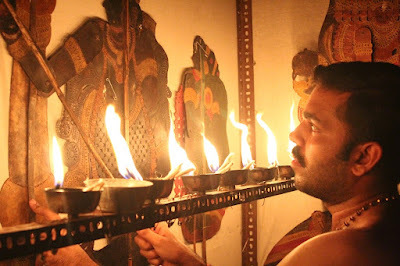
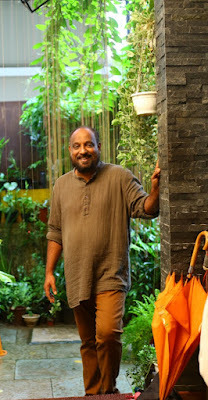
Filmmaker Saheer Ali’s documentary on Tholpavakoothu (shadow puppetry) portrays the dismal state of the 2000-year-old art form
By Shevlin Sebastian
When documentary filmmaker Saheer Ali was shooting his documentary on the 2000-year-old art form, Tholpavakoothu, called ‘Nizhal Yathrikan’ (Shadow Traveller — A Puppeteer’s Tale), he came across an unforgettable scene.
It was 9 pm. There were another two hours for the Tholpavakoothu performance to begin at a Bhagavathy Devi temple in Palakkad, Kerala
Ramachandran Pulavar, one of the greatest artists of the art form and a Padma Shri Award winner, was sleeping on a mat. This was under a tree in a field. “Mollywood stars rest in air-conditioned caravans,” said Saheer. “This gives you an idea of the sad situation of the art form. I felt despondent when I saw that. These artists don’t get any facilities. Society should cherish them.”
Saheer said that society does not have much interest in art. “Earlier, people would flock to see plays and dramas,” said Saheer, who runs a drama troupe called ‘Keli’. “Now the audience has dwindled.”
The performances begin late at night and continue till 5 a.m. “They are paying homage to Devi,” said Saheer. “There is almost no audience for the entire show. There will be a few people at the beginning. After a while, they will drift away.”
But the Pulavar family is undeterred. They carry on. It is a devotion. They get paid a few hundred rupees for a performance. This is only during the festival season, which starts at the end of December and concludes at the end of May.
“Indeed, there is not much revenue,” said Ramachandra. “But we are lifelong devotees of the art form. So, we must remain dedicated. If we give up, Tholpavakoothu will die. That will be the most painful to watch. So, irrespective of the financial difficulties, we will continue to support it.”
When the season is over, the Pulavars cultivate the land and nurture cows at their farm at Palakkad. But because of climate change, global warming, and fewer workers, it has become difficult to do farming.
The 27-minute documentary begins with a scene where Ramachandra is paying homage at the tomb of his father, K.L. Krishnan Kutty Pulavar. His father was the eighth generation practitioner of the art form. It was he who taught Ramachandra about the art form.
The art form uses theatre, dance, visual arts and music. And they tell stories from Tamil poet Kamba’s version of the Ramayana.
The stage is 42 feet long. Behind the stage is a screen. This is made of white cloth. They place the puppets behind it. For the lighting, the team places 21 lamps behind the puppets. This causes the shadows to appear on the screen.
The puppets were earlier made of deerskin. But nowadays, the family uses goat or buffalo skin.
First, someone removes the hair. Then, they dry the skin. After that, an artist outlines the character. Then, they cut it out and paint it with vegetable colours.
The language spoken is a mix of Tamil, Sanskrit and Malayalam. The instruments used are the traditional drums, cymbals, and gongs.
The movements are manipulated by sticks extending from the figures. The filigreed puppets appear on the screen.
There is a fight between Jatayu and Ravana; another conflict is between Bali and Sugreeva. In between, birds are flying, while an elephant rumbles across, apart from rabbits, squirrels and a deer. There is the sound of a tree falling. Lord Hanuman comes along, apart from Lord Rama and Sita. And on and on, the characters come and go.
Incidentally, Saheer’s daughter, Fabi, has written the script. She has just completed her MA in Malayalam from Maharaja’s College, Kochi. The producer is Ramachandra’s second son, Rahul.
To attract a new audience, Ramachandra has diversified from the Ramayana. So he did a play on Mahatma Gandhi and Jesus Christ. “The artists have also done plays about the dangers of alcohol, women’s safety, and throwing garbage on the streets,” said Saheer.
And the second generation is stepping up. In 2016, Ramachandra’s eldest son Rajeev Pulavar won the Ustad Bismillah Khan Yuva Puraskar Award. The Sangeet Natak Akademi gives this for outstanding artists below 40.
His younger son Rahul is doing research on Tholpavakoothu through a fellowship at the University of Connecticut, USA. He is also doing his doctorate in Comparative Literature and Cultural Studies. Ramachandra’s daughter Rajitha has become a performer. His wife Rajalakshmi has won a central government fellowship to research Tholpavakoothu.
They screened a preview in Kochi on July 5. A select crowd was invited. The family is trying to get it released at the International Film Festival of Kerala in Thiruvananthapuram in December 2024. They are also trying to get it screened at other international festivals. They want to go on the festival circuit to spread knowledge of the art form across the world.
During the release function, Padma Shri Mattanoor Sankaran Kutty, a leading percussionist on the chenda (drum), praised the fact that the director was a Muslim. When there is such an intense effort to create polarisation, he said, this will help bring people together.
Sanskrit scholar and former vice chancellor of the Kerala Kalamandalam KG Paulose said that he had seen many performances, but it was only through the documentary he got a deeper understanding of the art form.
How Saheer got involved, he had worked as an associate on Mollywood actor P. Balachandran’s film, ‘Ivan Megharoopan’ (2012). This is a film based on the life of Malayalam poet P. Kunhiraman Nair. In the movie, there was a sequence of Tholpavakoothu.
As a result, Saheer became close to Ramachandra and his family. And when the family wanted to make a documentary, they immediately called on Saheer. They knew Saheer would draw on his experience of being associated with the Malayalam film industry for over 25 years.
A bit of history. In 1996, the International Film Festival of Kerala was being staged in Thiruvananthapuram for the first time. Noted director G. Aravindan told festival director Shaji N Karun about using a still from the Tholpavakoothu play, ‘Lanka Lakshmi’, as the logo for the festival. Saheer said, “It shows Lakshmi looking graceful after a curse on her was lifted by the touch of Hanuman.” The festival continues to use the same logo.
(An edited version was published in The Sunday Magazine, The New Indian Express, South India and Delhi)
July 29, 2024
The long journey to the top
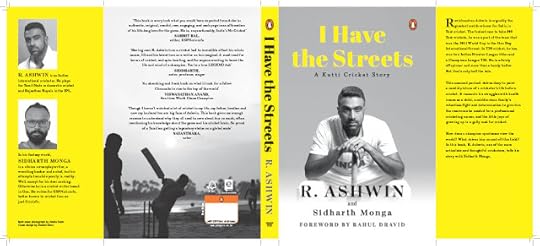
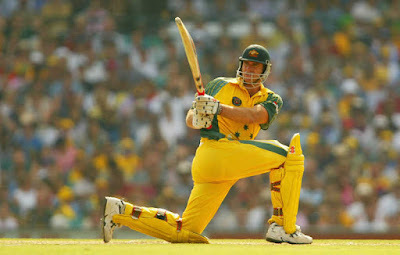
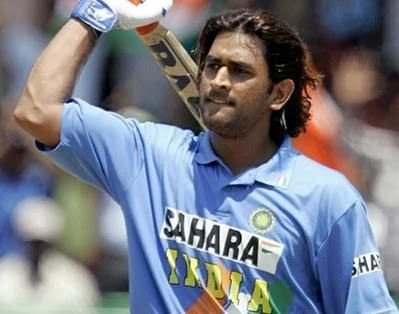 Captions: Book cover; Australian bastman Matthew Hayden; MS DhoniIn ‘I Have the Streets — a Kutti Cricket Story’, Ravichandran Ashwin talks about his journey from childhood to the apex of Indian cricketBy Shevlin Sebastian At 4 p.m. on a summer day in 2010, Ravichandran Ashwin stepped out to play cricket. This was on 1st Street in Ramakrishnapuram in West Mambalam, Chennai. A lamp post was the wicket. As they played, scooters and bikes passed by. When there were pedestrians on the pavement, they stopped playing. For the 24-year-old, it was a fun reminder of his childhood days. Soon, a young man walked past, accompanying an elderly lady. There is a temple and a hospital nearby. The man recognised Ashwin. He made the lady wait near the temple. Ashwin was batting. He hit a ball and set off on a run and made it to the other end, without getting out. The man came near Ashwin and shouted, “If only you had done this drop-and-run at Chepauk, Chennai Super Kings (CSK) would have taken the two points and would not be struggling [now].”Nine days earlier, in a match against Kings XI Punjab, Ashwin needed to get one run off the last two balls. But he failed to do so. The match ended in a tie. Later, CSK lost in the tie-breaker. In the Prologue of his autobiography, ‘I have the streets — a Kutti Cricket Story,’ written along with co-author and screenwriter, Sidharth Monga, Ashwin says, ‘When I lose something in life, when I see no other light, I turn to this cricket on the street with some of my best friends. Everything changes, but not the joy I experience when I play here.’ In the foreword former Indian captain Rahul Dravid states that the book will have wider appeal because anyone who has ever bowled in a dusty lane will relate to it. ‘So will anyone who has ever dreamed of hitting a match-winning six for their national team; anyone who has juggled studies and sport and spent the last few days before exams in a boot camp of sorts with their friends’. The story begins when Ashwin is five years old. He had health issues like tuberculosis and regular bouts of wheezing. Once the family had planned to go on a holiday to Kodaikanal. But on the train Ashwin started vomiting. The parents had no option but to step off and take their son to the doctor. But it seemed Ashwin was destined to be a cricketer. His father, Ravichandran, worked in the accounts section of the Indian Railways. He was also a fast bowler who played lower-division league cricket. Once, during a match, Ashwin saw his father send the bail flying with a ball. Ravichandran took Ashwin to watch a Test match between India and England. Ashwin saw Sachin Tendulkar bat and Anil Kumble work his magic with the ball. India won the match by an innings. Father and son went to the commentary box. They got an autograph from batting legend Sunil Gavaskar. Soon, Ashwin got interested in cricket. His parents enrolled him at the local YMCA to learn cricket. By the time he was 14, his wheezing stopped suddenly. He was practising and doing well in the local circuit. Ashwin was selected to play for Tamil Nadu in the South Zone Under 14 tournament. The good performances continued. When he was selected to play for the India Under 17 team, Ashwin faced what most cricketers from South India face. Since he cannot speak fluent colloquial Hindi, which is the lingua franca among the coaches and the players, they laughed at him. ‘I felt left out, humiliated and intimidated,’ he said. A term which also irked Ashwin was when players from the rest of India said, “Yeh to Madrasi hai.” Ashwin wrote, ‘I am from Madras and I am proud of it even though it is now called Chennai. I will forever be proud of the city on whose streets I’ve spent most of my life. Playing cricket, talking cricket, celebrating festivals and New Year’s, building friendships, travelling these streets to go to cricket practice and the movies….’He described his selection for the Ranji Trophy. Being dropped for matches. Learning to be resilient. And learning from senior off-spinners how to make field changes and bowling variations to get wickets. By constantly playing and practising, Ashwin became adept at the art of spin bowling. Thereafter, Ashwin talked about his experiences as a member of the Chennai Super Kings in the Indian Premier League. The one player who amazed him the most was Australian batting great Matthew Hayden. Before their first match against Kings XI Punjab, as the players congregated in the dressing room, Hayden said, “Sreesanth and Brett Lee will come running at me. They will try to shape the ball back into me to try and knock me over. But I am going to just walk straight at them and try to go right over their heads. And I’m going to go really hard. They will come at me, but I will be nasty to them. I will show them who is the boss.” Yes, Hayden did show them he is the boss. There is an absorbing section where Ashwin describes his interactions with former Indian captain MS Dhoni. ‘Each captain is different,’ writes Ashwin. ‘Some can make donkeys run. Some people can buy wounded horses, treat them, train them and make them run. But MS Dhoni will only make a racehorse run. He needs to be convinced before he makes you run. If he doesn’t believe you are a racehorse, he’ll probably give you the time to become one, but he won’t make you run if you aren’t there yet.’ This is a charming book written in a lucid style. It gives you a picture of Ashwin’s life and career, the setbacks and the successes. Nothing comes easy. Grit, resilience, hard work and dollops of luck are required. While the book will appeal to all cricket lovers, it can be a revelation for those who are trying to make their way from junior cricket to the Indian team.(Published in The Sunday Magazine, Hindustan Times, Delhi and other editions) Book DetailsTitle: ‘I have the Streets – A Kutti Cricket story’Authors: R. Ashwin and Sidharth MongaPublisher: Penguin Random House IndiaPages: 173Price: Rs 599
Captions: Book cover; Australian bastman Matthew Hayden; MS DhoniIn ‘I Have the Streets — a Kutti Cricket Story’, Ravichandran Ashwin talks about his journey from childhood to the apex of Indian cricketBy Shevlin Sebastian At 4 p.m. on a summer day in 2010, Ravichandran Ashwin stepped out to play cricket. This was on 1st Street in Ramakrishnapuram in West Mambalam, Chennai. A lamp post was the wicket. As they played, scooters and bikes passed by. When there were pedestrians on the pavement, they stopped playing. For the 24-year-old, it was a fun reminder of his childhood days. Soon, a young man walked past, accompanying an elderly lady. There is a temple and a hospital nearby. The man recognised Ashwin. He made the lady wait near the temple. Ashwin was batting. He hit a ball and set off on a run and made it to the other end, without getting out. The man came near Ashwin and shouted, “If only you had done this drop-and-run at Chepauk, Chennai Super Kings (CSK) would have taken the two points and would not be struggling [now].”Nine days earlier, in a match against Kings XI Punjab, Ashwin needed to get one run off the last two balls. But he failed to do so. The match ended in a tie. Later, CSK lost in the tie-breaker. In the Prologue of his autobiography, ‘I have the streets — a Kutti Cricket Story,’ written along with co-author and screenwriter, Sidharth Monga, Ashwin says, ‘When I lose something in life, when I see no other light, I turn to this cricket on the street with some of my best friends. Everything changes, but not the joy I experience when I play here.’ In the foreword former Indian captain Rahul Dravid states that the book will have wider appeal because anyone who has ever bowled in a dusty lane will relate to it. ‘So will anyone who has ever dreamed of hitting a match-winning six for their national team; anyone who has juggled studies and sport and spent the last few days before exams in a boot camp of sorts with their friends’. The story begins when Ashwin is five years old. He had health issues like tuberculosis and regular bouts of wheezing. Once the family had planned to go on a holiday to Kodaikanal. But on the train Ashwin started vomiting. The parents had no option but to step off and take their son to the doctor. But it seemed Ashwin was destined to be a cricketer. His father, Ravichandran, worked in the accounts section of the Indian Railways. He was also a fast bowler who played lower-division league cricket. Once, during a match, Ashwin saw his father send the bail flying with a ball. Ravichandran took Ashwin to watch a Test match between India and England. Ashwin saw Sachin Tendulkar bat and Anil Kumble work his magic with the ball. India won the match by an innings. Father and son went to the commentary box. They got an autograph from batting legend Sunil Gavaskar. Soon, Ashwin got interested in cricket. His parents enrolled him at the local YMCA to learn cricket. By the time he was 14, his wheezing stopped suddenly. He was practising and doing well in the local circuit. Ashwin was selected to play for Tamil Nadu in the South Zone Under 14 tournament. The good performances continued. When he was selected to play for the India Under 17 team, Ashwin faced what most cricketers from South India face. Since he cannot speak fluent colloquial Hindi, which is the lingua franca among the coaches and the players, they laughed at him. ‘I felt left out, humiliated and intimidated,’ he said. A term which also irked Ashwin was when players from the rest of India said, “Yeh to Madrasi hai.” Ashwin wrote, ‘I am from Madras and I am proud of it even though it is now called Chennai. I will forever be proud of the city on whose streets I’ve spent most of my life. Playing cricket, talking cricket, celebrating festivals and New Year’s, building friendships, travelling these streets to go to cricket practice and the movies….’He described his selection for the Ranji Trophy. Being dropped for matches. Learning to be resilient. And learning from senior off-spinners how to make field changes and bowling variations to get wickets. By constantly playing and practising, Ashwin became adept at the art of spin bowling. Thereafter, Ashwin talked about his experiences as a member of the Chennai Super Kings in the Indian Premier League. The one player who amazed him the most was Australian batting great Matthew Hayden. Before their first match against Kings XI Punjab, as the players congregated in the dressing room, Hayden said, “Sreesanth and Brett Lee will come running at me. They will try to shape the ball back into me to try and knock me over. But I am going to just walk straight at them and try to go right over their heads. And I’m going to go really hard. They will come at me, but I will be nasty to them. I will show them who is the boss.” Yes, Hayden did show them he is the boss. There is an absorbing section where Ashwin describes his interactions with former Indian captain MS Dhoni. ‘Each captain is different,’ writes Ashwin. ‘Some can make donkeys run. Some people can buy wounded horses, treat them, train them and make them run. But MS Dhoni will only make a racehorse run. He needs to be convinced before he makes you run. If he doesn’t believe you are a racehorse, he’ll probably give you the time to become one, but he won’t make you run if you aren’t there yet.’ This is a charming book written in a lucid style. It gives you a picture of Ashwin’s life and career, the setbacks and the successes. Nothing comes easy. Grit, resilience, hard work and dollops of luck are required. While the book will appeal to all cricket lovers, it can be a revelation for those who are trying to make their way from junior cricket to the Indian team.(Published in The Sunday Magazine, Hindustan Times, Delhi and other editions) Book DetailsTitle: ‘I have the Streets – A Kutti Cricket story’Authors: R. Ashwin and Sidharth MongaPublisher: Penguin Random House IndiaPages: 173Price: Rs 599
July 14, 2024
When a satirist gets his point across with a smile
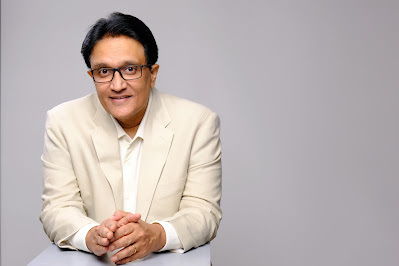
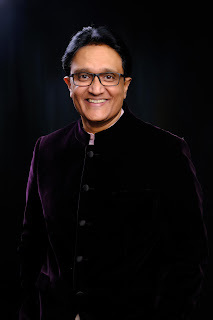

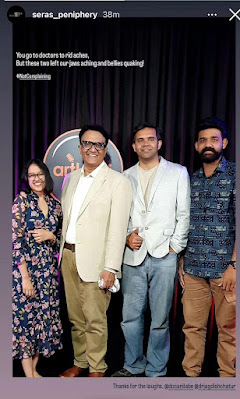
Last photo: Anil Abraham with his family
The Bengaluru-based dermatologist Anil Abraham has made his name as a stand-up comedian. His Instagram reels have gone viralBy Shevlin Sebastian Dermatologist Anil Abraham started doing comic reels on Instagram during the Covid pandemic. But it was the ‘Flight to Jamnagar’ that went viral, with over 10 lakh views. It was Anil’s take on the pre-wedding celebrations of billionaire Mukesh Ambani’s son, Anant, on March 1-3. It pushed Anil into the spotlight. In that reel, Anil has long hair framing his face, a scarf around his neck, and a black coat. In a feminine voice, he says, “Ladies and gentlemen, boys and girls, welcome aboard the Dindigo Airlines flight to Jamnagar. Yes, it is an international airport now for ten days or however long it takes rich people to party. The crew on this flight speak Gujarati and garishness, Punjabi and privileged English and entitlement. “We have only VIPs on this flight. Mark Zuckerberg, ladies and gentlemen. Bill Gates, no Sir, you cannot open any windows. No doors either. That is only allowed for Indian politicians. You Sir, who are you? Oh, you are the rat miner who rescued people from a tunnel. You have been a hero for one day. Go back and sit in economy.” Anil modelled the air hostess on a well-known personality on YouTube called Pushpalata Gaitonde. Anil realised the reach of his reels when a pilot walked into his clinic. When Anil asked which airline he flew with, the man smiled and said, “Dindigo!” The patient confessed that Indigo pilots and cabin crew often played the flight attendant reels. They always had a good laugh. Another reel which went viral was Simple Sudha. Anil pokes gentle fun at writer Sudha Murthy who kept saying she was a simple person. “The city I live in is not Bangalore, but simplicity,” said Anil. “Two simple spoons I carry everywhere. One veg and another is a non-veg spoon... I made my husband what he is today and my daughter, she made her husband the Prime Minister of the United Kingdom. I do humble bragging.”Anil also has a character called Coconut Oil Kesavan. He suggests coconut oil solves all problems. But the main character is a middle-aged Kannadiga called Kuppu, whose wife is Kamala, a bossy woman. Kuppu has a platonic affair with his neighbour, Pakkad Mane Parvathy. “My inspiration for Kuppu has come from [legendary cartoonist] RK Laxman’s ‘Common Man’,” said Anil.Asked to describe his reels, Anil said, “It is satire cloaked in humour. If I want to say something unpalatable or politically incorrect, I use humour and give it a domestic reference. Those who enjoy slapstick will enjoy it. They like funny expressions and costumes. Others can read between the lines.” Anil said that he gets inspiration from reading the newspaper every morning. “The front page of a newspaper will provide enough material for at least five reels,” he said. “What I mean is that real life provides enough opportunities for humour.” A few people had asked the comedian, “Why haven’t you been trolled?” Anil believes that so far, they have not understood the underlying meaning of the reels. Hence, they have left him alone. “Thank God for that,” he said. Surprisingly, Anil does not have a script before he speaks. He has an idea of what he is going to talk about. “For me, it doesn’t work if I write it down,” he said. “I prefer to do it spontaneously. And I do it in one take only.” Regarding his make-up and costume changes, Anil smiled and said, “It is an Instagram Filter and takes all of five seconds.” Asked whether his profession is reflected in his wit, Anil said, “I attend a lot of medical conferences. So I will speak about that. Then I talk about my practice, student days, becoming a doctor and violence that is meted out on us.” Anil worked at St. John’s College in Bangalore for 30 years before branching out on his own. Patients also offer him a lot of material. He said that a lot of times the problem is minor but for the patient, it is the most important issue in the world. Once a lady came in and said, “Doctor, you don’t know how much hair I am losing. I lose hair every day. There is hair in my comb, in the bathroom basin and my husband’s butter chicken. Hair everywhere, except on my head.” Anil said that they don’t realise they are being amusing, and he is storing those sentences for future use. Anil, who has thick black hair, is a Malayali who grew up in Bangalore. He is married to Veena, a non-Malayali dermatologist. And they have their clinic in Bangalore. They have two college-going sons, Aaditya, and Anirudh.(An edited version was published in The Sunday Magazine, The New Indian Express, South India and Delhi)
July 9, 2024
Many questions, few answers
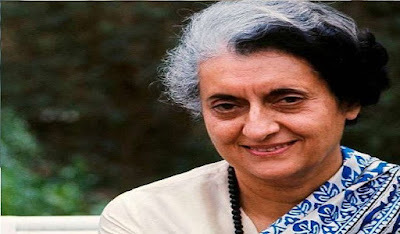

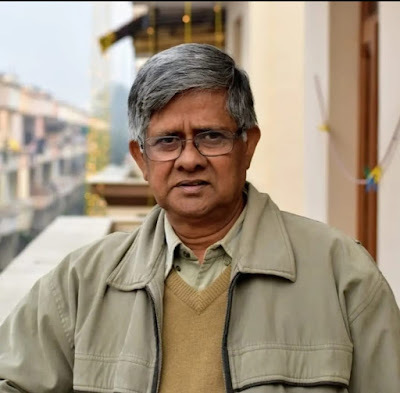
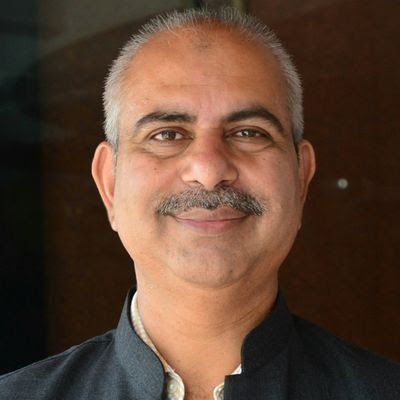
Photos: Former Prime Minister Indira Gandhi; the book cover;Prakash Patra; Rasheed Kidwai
‘The Scam That Shook a Nation —The Nagarwala Scandal’ explores how a Delhi branch of the State Bank of Indiain the 1970s was defrauded of Rs 60 lakh.
By Shevlin Sebastian
At 11.45 am on May 24, 1971, VedPrakash Malhotra, the chief cashier of the Parliament Street branch of theState Bank of India, got a call. The caller said, “Shri Haksar, secretary tothe Prime Minister of India, wants to talk to you.”
“Put him through,” saidMalhotra.
Haksar said, “The Prime Ministerof India wants Rs 60 lakh (today’s value: Rs 170.62 crore) to be sent forhighly secret work. She will send a person and you can hand over the money tohim.”
Malhotra was not sure. ThenPrime Minister Indira Gandhi came on the line and confirmed it, stating thismoney had to be sent to Bangladesh on an Air Force plane. This time, Malhotrabecame convinced that the order had come from the highest office in theland.
With the help of his colleagues,Malhotra collected the money and took it to the Free Church, which was verynear the bank. There he met a tall, fair man wearing an olive hat. Afterexchanging the correct code, they drove for a while in Malhotra’s governmentvehicle towards Palam airport.
At the taxi stand on PanchsheelMarg, the man got out of the car and enlisted the help of a coolie to load thebox into the trunk of a Fiat taxi. He thanked Malhotra and asked him to go tothe Prime Minister’s office to get the receipt.
When Malhotra went to the PrimeMinister’s official complex on 1 Akbar Road, he was surprised to discover thatIndira Gandhi had gone to Parliament. It was the first day of the secondsession of the seventh Lok Sabha. He told the security that he wanted to meetHaksar. But they told him Haksar was also in Parliament.
So, Malhotra drove to Gate No 5of Parliament House and asked to see the PM. He was told both the PM and Haksarwere having lunch. Finally, at 1.30 pm, Malhotra met NK Seshan, the PM’sprivate secretary, and told him about what happened. Seshan informed the PM. Hecalled Haksar, who was in South Block who rushed to Parliament. When Malhotratold Haksar what had happened, the latter exclaimed, “This is an extraordinaryfraud.” Soon, the police launched an investigation.
All this has been detailed inthe book, ‘The Scam that Shook a Nation — The Nagarwala Scandal’ by seniorjournalists Prakash Patra and Rasheed Kidwai.
Thanks to the detailed researchby the authors, we can read the confessional statement by Nagarwala.
Here is an extract: ‘The driverkept watching the road and saw that I was transferring big bundles of currencynotes into my suitcase and bag. I wanted him to see all this and feel uneasy,which he did. I abandoned the empty trunk and asked him to take me to ConnaughtPlace. Along the way, the driver was getting nervous and started askingquestions about the money. I offered him Rs 500 in cash and told him not tomention it to anybody, only so that in case the police came to him, he couldtell. I was sure at the time that this driver would safely lead the police tothe Parsi Dharamshala. And this is exactly what happened.’
The question that arises is: whydid Nagarwala want to get caught?
KP Khanna, the judicialmagistrate first class in charge of the Chanakyapuri area, tried the case.Within hours, Nagarwala was sentenced to two years of rigorous imprisonmentwith a fine of Rs 2000. Nagarwala landed up in Tihar Jail as a ‘C’ classprisoner.
Expectedly, there was agathering storm as the Opposition felt that Indira Gandhi was involved. One oftheir lawyers filed a revision petition. On June 21, Delhi Sessions Judge RNAggarwal set aside the conviction.
This book is riveting, to saythe least. There were so many twists and turns.
On November 20, 1971, six monthsafter discovering the hoax, Devinder Kumar Kashyap, 31, the chief investigator,died in a road accident near Mathura. The belief was that Kashyap, a 1967-batchIPS officer, who had just got married, knew too much and had been gotten ridof. However, the authors’ research has shown that it could have been anaccident.
Following that tragedy, anothertwist takes place. On March 2, 1972, Nagarwala died of a heart attack at the GBPant Hospital on his 50th birthday. Again, suspicions were raised, although anautopsy revealed that no poison was present in the body.
Other subjects which are coveredinclude an in-depth profile of Nagarwala and Malhotra, which traces their livesbefore the hoax, the political landscape during that period (1966-71), anddetails of the P Jagmohan Reddy Commission which investigated the hoax. BothIndira Gandhi and Morarji Desai also testified.
In the Authors’ note, they said,‘The commission set up to probe the scam reached its conclusions, but itsassumptions are debatable.’ They also said that while there was an admission ofguilt, the identities of the real culprits remained hazy. The investigationprocess, they said, was too speedy to allay doubts.
In short, there were manyquestions but few answers.
Both the writers, Prakash Patraand Rasheed Kidwai, are seasoned journalists with over three decades ofexperience. While Patra, a former President of the Press Club of India, doespolitical reporting, Kidwai covers government, politics, community affairs andHindi cinema. Kidwai has also published seven other books, including abiography of Sonia Gandhi.
(Published in the SundayMagazine, The Hindustan Times, All Editions)
-----
BookDetails
Title: ‘TheScam That Shook a Nation – The Nagarwala Scandal’
Authors: PrakashPatra and Rasheed Kidwai
Publisher:HarperCollins
Pages: 262
Price: Rs 399
July 7, 2024
When a roof became an amphitheatre

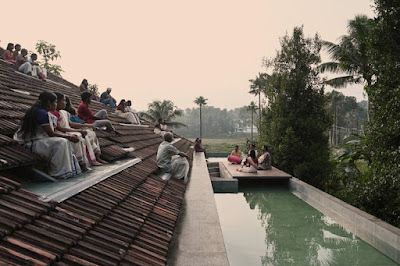

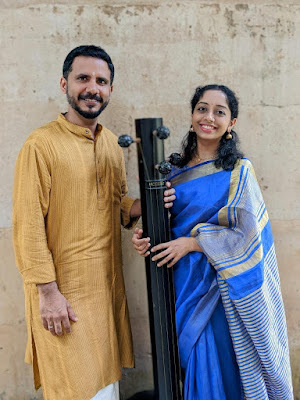

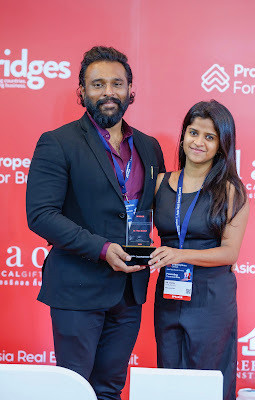
Photos: Drone view of the Nisarga Art Hub; aconcert taking place; the skylight; Vishnudev KS and Lakshmi V; the cantilever studio; Vinu Daniel and his co-designer Oshin Mariam Varughese
Carnatic singer couple Vishnudev KS and Lakshmi V wanted a mud home at their home in Karukutty, Kerala. When noted architect Vinu Daniel and his team built Nisarga Art Hub, it became a centre for the arts thanks to its unique design By Shevlin Sebastian Vishnudev KS and his wife Lakshmi V are Carnatic singers. They were based in Chennai during the pandemic. Because of a newborn baby, they found it difficult to manage. They also wanted to build a home. So they returned to Vishnudev’s ancestral place of Karukutty (46 kms from Kochi).Vishnudev had inherited a large plot of land from his father. Just opposite the plot, there are paddy fields. “In Chennai, we cannot dream of building a large custom-built house,” said Vishnudev. “It was important for us that the house become part of the natural environment. So we wanted to build a mud house.”So they Googled for architects who deal with mud as a material for construction. And that was when they stumbled on the works of architect Vinu Daniel, who was in the 100 Next list of influential leaders of Time Magazine in 2023. And they immediately found it impressive because of its innovative elements.“Vinu has an experimental mindset,” said Vishnudev. “We could not believe there could be so much innovation for a mud house.” So, they called Vinu up. Vinu and his co-designer Oshin Mariam Varughese came and looked at the plot in July 2020. And they liked what they saw. “I sensed a wonderful possibility,” said Vinu. “I knew we should incorporate the rural concept inside the building. That is why we used traditional mud architecture.” Also, because there were no trees around, Vinu wanted to give a camouflaged appearance. While the roof comprised traditional terracotta tiles, beneath it they used poly-jute cloth all across the ceiling. And from one end of the main hall to the other end, there is a wire mesh. This enables people to be in touch with nature outside. On some days, a steady breeze blew in. “If I put glass panes, it would have heated the hall,” said Vinu. The architect said that temperatures were rising in Kerala. Before 2000, there were only about ten days of 40 degrees Celsius. But today, there are over 100 days of these temperatures. “Now, with many new national highways being built, and rapid urbanisation, trees are being cut at an alarming rate,” said Vinu. “So we have less forest cover.” The construction began in 2020. What was most stunning were the walls. These are made of mud and other materials. When you place your palm on it, it feels cool. In 2014, Vinu realised that working with mud only would not make sturdy walls. He had a brainwave. Vinu decided to use the construction material that lies strewn about on vacant plots. He used cement, soil, inorganic waste material and even coconut shells and mixed it with the mud. His invention is called the Shuttered Debris Wall Technique. It strengthened the mud walls. In Nisarga, in the bedrooms, the walls rise to a height of 25-27 feet. “The walls are load-bearing,” said Vinu. “Two walls in the hall have taken the load off a jutting-out cantilever studio.” Helping Vinu were his colleagues Subhrodipta Ghosh, and Rosh V Saji. Vishnudev told Vinu that as musicians, they needed a lot of space to perform and teach. “When somebody comes to the house, they should feel that this is a house built for musicians,” said Vishnudev. Hence, the hall, with an area of 2200 sq. ft. has no furniture. You sit on the floor. There is an open kitchen on one side. And doors leading to bedrooms and a bathroom. When Vishnudev and Lakshmi asked for more space to hold concerts outside their house, Vinu measured the angle of the roof. It turned out to be 35 degrees. This matched the 30-degree angle of an amphitheatre. So, Vinu came up with the idea of using the roof like an amphitheatre. On the gutter of one side of the roof, Vinu had already planned to make an elongated swimming pool. He felt he could cover a part of the pool with wooden slabs and set up a stage. Then, at different levels of the roof, he removed the tiles and made glass seats. There are 34 seats. The top seat is at the height of a two-storey building. The images of the roof went viral on social media. There were over 9 million views on Instagram and YouTube. It helped Nisarga to establish itself as an art hub. Incidentally, Nisarga is a Sanskrit word. It means a natural state. “Whenever somebody comes here, they can be themselves,” said Vishnudev. “An artist can express his truest self.” The couple received a lot of media coverage. Many well-known artists have now performed at the hub. Artists from all over the world have asked Vishnudev whether they could come and perform. As Vinu said, “The initial idea was to make a residence for a musician-couple. Now, thanks to its fame, it is most probably going to be a residency for artists.” Vishnudev agreed. He plans to add a building outside with rooms so that when artists come, they will have a place to stay. The couple began living in the hub in September 2023. At that time, leading artist Niloy Ahsan inaugurated the hub with a Dhrupad recital. (An edited version was published in The Sunday Magazine, The New Indian Express, South India and Delhi)
July 2, 2024
Some thoughts about a painting
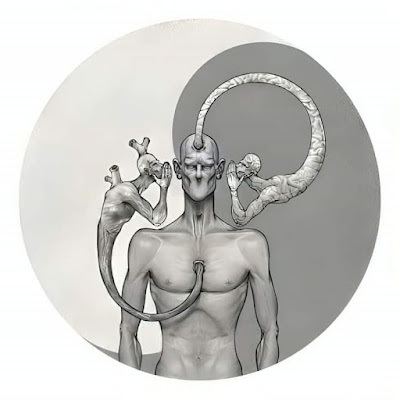

By Shevlin Sebastian
When my former colleague and friend Jose NV sent me this painting, it made me think. This is the age-old dichotomy for a human being. What should we listen to? The heart or the brain. And now scientists say there is a second brain. And that is the gut.
So, in a crisis or an emergency, you receive inputs from the brain, heart and gut. What do you listen to? All the inputs come to your mind. To that ethereal concept known as the self.
If it is a split-second decision, like playing a point during a tennis match, it is always best to follow your instinct. That means your heart or gut.
In an interview, batting great Sachin Tendulkar said that when he went to the crease, his primary aim was to move the conscious aside and let the unconscious do the batting. There was too little time after the ball left the bowler’s hand to use reason and logic and then respond.
All of us do something similar when we drive a car and have an animated conversation simultaneously. The unconscious drives the car. If the mind does not intervene with its random thoughts, the unconscious can execute the action perfectly.
If it is a decision that you have time to mull over, then the brain does a lot of pros and cons. Most outstanding personalities decide to follow the heart or the gut. These are far more accurate. You get results from this. But is this correct? In her autobiography, ‘My Life’, the former Israeli Prime Minister Golda Meir said that sometimes her intuition made mistakes too.
Some may ask, why discount the brain? It has the vast powers of the unconscious.
But most of us cannot use these powers. From the time we are born to the age of seven, we have received millions of impressions. These form our mindset. They influence our actions till the day we die.
If the impressions are positive, then there is no problem. Life moves forward smoothly, the conscious and the unconscious gelling perfectly.
But if the experiences in childhood are bad, then you develop a negative mindset. This results in persistent defeats right through life. This happens, despite your conscious mind wanting to achieve things. Can we heal childhood traumas and turn around our lives? It takes years of therapy and being constantly on an inner journey for healing to happen. It is like climbing Mount Everest. Many dream of it but few achieve it.
Ultimately, a decision is a leap into the dark. You might land on your feet or it could be a crash landing with broken bones and dreams.
I trust the heart more than the brain. Somehow, they lead to correct outcomes. The problem with the brain is that the ego is involved. Does the ego live in the brain? What exactly is an ego? And where is its location? It is amorphous. We cannot touch it, but we can feel its presence all the time.
The best way is to use all three. Let the brain decide. Then you should observe how the heart and gut react. If they are fine and there are no tremors or alarms, most probably your decision is right.
One cannot avoid the fact that at every moment you have to make some decision or the other. So, we have to use the full powers at our disposal to make the right choices.
Jose could not identify the painter. Thanks to the work of artists, their works can set us thinking. And we can hope to change for the better.
June 19, 2024
Edge-Of-The-Seat Suspense

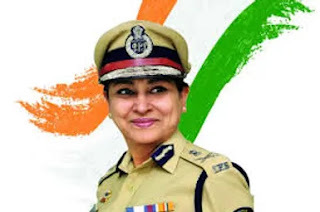 Former police chief Meeran Chadha Borwankar talks about her career in the book, ‘Madam Commissioner – The Extraordinary Life of an Indian Police Chief’By Shevlin SebastianIn 2012, Jyoti Krishnan, an employee of a chartered accountancy firm in Pune, was on her way to work. Two men, pretending to be police officers, asked her to take off her gold necklace and ornaments and put it in her handbag as there was a theft in the neighbourhood. Jyoti did so. Then they distracted her by pointing at something in the distance. Later, they left on their bike. When Jyoti checked her bag, the ornaments were missing. It was then she realised she had been duped. Jyoti decided to contact Pune City Commissioner Meeran Borwankar. Jyoti had met Meeran twice earlier because was a client at the chartered accountancy firm where she worked. Meeran asked what the thieves looked like. “They were very fair and looked like Iranis,” said Jyothi. It took one month, but the police caught the thieves in Mumbai. Their modus operandi was to steal in Pune and flee to Mumbai. The goldsmith had melted the jewellery. But he gave jewellery worth its value to Jyothi. This is one example. There may be hundreds of such cases where Meeran might have intervened and restored the stolen items. This stellar officer has written a book called ‘Madam Commissioner- The Extraordinary Life of an Indian Police Chief’ (Pan Macmillan Publishers). The book details Meeran’s experiences as she handled communal riots, faced dacoits, criminals and robbers, came across brutal murders, and investigated the Jalgaon sex scandal, where minors had been gang raped by politicians and criminals. She also oversaw the hanging of 26/11 terrorist Ajmal Kasab and the 1993 Mumbai blasts convict Yakub Memon. Meeran described in detail the extraordinary heist of a Joyalukkas jewellery showroom in Hyderabad on May 16, 2006. Jewellery worth Rs 9 crore had been stolen. Through some deft sleuthing and deductions, within days, the Crime Branch in Mumbai was able to apprehend the main criminal Vinod Singh and his associate Ajay Jawahar Singh who had fled to the coastal city.Meeran writes, ‘In the past such sensational detections and recoveries of gold and diamonds had led to allegations of embezzlement by the police. In light of that, I did not leave the office, nor did I get up to take a bathroom break, until the documentation had been completed, and every piece accounted for.’ Thanks to Meeran and her team, all the jewellery was recovered.There is a theory that no matter how bad a person is, there is something good in him or her. Meeran nods and says, “I have seen the worst criminals being wonderful parents or neighbours. And genuinely so.” Once the Crime Branch in Mumbai had intercepted a call from underworld gangster, Chhota Rajan, who was living abroad. He was speaking to his wife, Sujatha, whose nickname was Nani.Chhota Rajan whether his three daughters were studying well. His wife replied in the affirmative. Then he said, “Nani, our daughters should study hard and sit for the IPS.”This statement came as a surprise for Meeran. “It proves that even a hardened criminal like Chhota Rajan respects the law,” says Meeran. Of course, the elephant in the room is the pressure exerted by politicians to do something unlawful. How did Meeran manage this pressure? “During training, we were told that political interference is a grave issue,” says Meeran. “You have to respect politicians because they are representatives of the public. But you have to do what you feel is correct. And be ready for the consequences.”Like most honest officers, Meeran had paid the price in stifled promotions and other problems. Apart from politicians, the massive corruption in the force is now a major issue. Asked about the way to eradicate corruption, Meeran says, “Around 98 percent of the corruption can be eradicated by a strong watch by the community and the media. The government should expand the counter intelligence and anti-corruption units. Most states have small and ill-equipped units that nobody is scared of.” In a police force, 40 percent are honest, 40 percent are fence sitters, and 20 percent are gone cases, says Meeran. These fence sitters will get afraid if there are very strong anti-corruption units. And a very important tool to reduce corruption is to ensure the police worked for only eight hours, instead of the 14 they do today. “They justify their corruption by saying they work for 14 hours for a poor salary,” says Meeran. “In their own minds, taking money is justified.” As to whether an officer can be damaged by constantly dealing with criminals, murderers, and thieves, Meeran says, “To a certain extent, yes. Before joining the police, I trusted people. But now my antenna is always alert. I don’t believe people easily. I have seen people cheat each other every day for decades. My years in the force has made me aware of the darker side of human nature. So I am always on alert, as compared to an average person.” Career Highlights Meeran Chadha Borwankar has been the recipient of the President of India Police Medal for Distinguished Services and Police Medal for Meritorious Services, and has won the Distinguished Leadership Award from the University of Minnesota.Some of the posts she held include being the Director General of the Bureau of Police Research and Development, and the National Crime Records Bureau, Police Commissioner, Pune City, and Chief of the Crime Branch, Mumbai.Meeran was Maharashtra State’s first female district police chief as well as its first woman commissioner.Meeran is on the board of several academic institutions. ‘Madam Commissioner’ is her third book. The earlier two were called ‘Leaves of Life’ and ‘Inspector Chougule (True Police Stories)’
Former police chief Meeran Chadha Borwankar talks about her career in the book, ‘Madam Commissioner – The Extraordinary Life of an Indian Police Chief’By Shevlin SebastianIn 2012, Jyoti Krishnan, an employee of a chartered accountancy firm in Pune, was on her way to work. Two men, pretending to be police officers, asked her to take off her gold necklace and ornaments and put it in her handbag as there was a theft in the neighbourhood. Jyoti did so. Then they distracted her by pointing at something in the distance. Later, they left on their bike. When Jyoti checked her bag, the ornaments were missing. It was then she realised she had been duped. Jyoti decided to contact Pune City Commissioner Meeran Borwankar. Jyoti had met Meeran twice earlier because was a client at the chartered accountancy firm where she worked. Meeran asked what the thieves looked like. “They were very fair and looked like Iranis,” said Jyothi. It took one month, but the police caught the thieves in Mumbai. Their modus operandi was to steal in Pune and flee to Mumbai. The goldsmith had melted the jewellery. But he gave jewellery worth its value to Jyothi. This is one example. There may be hundreds of such cases where Meeran might have intervened and restored the stolen items. This stellar officer has written a book called ‘Madam Commissioner- The Extraordinary Life of an Indian Police Chief’ (Pan Macmillan Publishers). The book details Meeran’s experiences as she handled communal riots, faced dacoits, criminals and robbers, came across brutal murders, and investigated the Jalgaon sex scandal, where minors had been gang raped by politicians and criminals. She also oversaw the hanging of 26/11 terrorist Ajmal Kasab and the 1993 Mumbai blasts convict Yakub Memon. Meeran described in detail the extraordinary heist of a Joyalukkas jewellery showroom in Hyderabad on May 16, 2006. Jewellery worth Rs 9 crore had been stolen. Through some deft sleuthing and deductions, within days, the Crime Branch in Mumbai was able to apprehend the main criminal Vinod Singh and his associate Ajay Jawahar Singh who had fled to the coastal city.Meeran writes, ‘In the past such sensational detections and recoveries of gold and diamonds had led to allegations of embezzlement by the police. In light of that, I did not leave the office, nor did I get up to take a bathroom break, until the documentation had been completed, and every piece accounted for.’ Thanks to Meeran and her team, all the jewellery was recovered.There is a theory that no matter how bad a person is, there is something good in him or her. Meeran nods and says, “I have seen the worst criminals being wonderful parents or neighbours. And genuinely so.” Once the Crime Branch in Mumbai had intercepted a call from underworld gangster, Chhota Rajan, who was living abroad. He was speaking to his wife, Sujatha, whose nickname was Nani.Chhota Rajan whether his three daughters were studying well. His wife replied in the affirmative. Then he said, “Nani, our daughters should study hard and sit for the IPS.”This statement came as a surprise for Meeran. “It proves that even a hardened criminal like Chhota Rajan respects the law,” says Meeran. Of course, the elephant in the room is the pressure exerted by politicians to do something unlawful. How did Meeran manage this pressure? “During training, we were told that political interference is a grave issue,” says Meeran. “You have to respect politicians because they are representatives of the public. But you have to do what you feel is correct. And be ready for the consequences.”Like most honest officers, Meeran had paid the price in stifled promotions and other problems. Apart from politicians, the massive corruption in the force is now a major issue. Asked about the way to eradicate corruption, Meeran says, “Around 98 percent of the corruption can be eradicated by a strong watch by the community and the media. The government should expand the counter intelligence and anti-corruption units. Most states have small and ill-equipped units that nobody is scared of.” In a police force, 40 percent are honest, 40 percent are fence sitters, and 20 percent are gone cases, says Meeran. These fence sitters will get afraid if there are very strong anti-corruption units. And a very important tool to reduce corruption is to ensure the police worked for only eight hours, instead of the 14 they do today. “They justify their corruption by saying they work for 14 hours for a poor salary,” says Meeran. “In their own minds, taking money is justified.” As to whether an officer can be damaged by constantly dealing with criminals, murderers, and thieves, Meeran says, “To a certain extent, yes. Before joining the police, I trusted people. But now my antenna is always alert. I don’t believe people easily. I have seen people cheat each other every day for decades. My years in the force has made me aware of the darker side of human nature. So I am always on alert, as compared to an average person.” Career Highlights Meeran Chadha Borwankar has been the recipient of the President of India Police Medal for Distinguished Services and Police Medal for Meritorious Services, and has won the Distinguished Leadership Award from the University of Minnesota.Some of the posts she held include being the Director General of the Bureau of Police Research and Development, and the National Crime Records Bureau, Police Commissioner, Pune City, and Chief of the Crime Branch, Mumbai.Meeran was Maharashtra State’s first female district police chief as well as its first woman commissioner.Meeran is on the board of several academic institutions. ‘Madam Commissioner’ is her third book. The earlier two were called ‘Leaves of Life’ and ‘Inspector Chougule (True Police Stories)’



